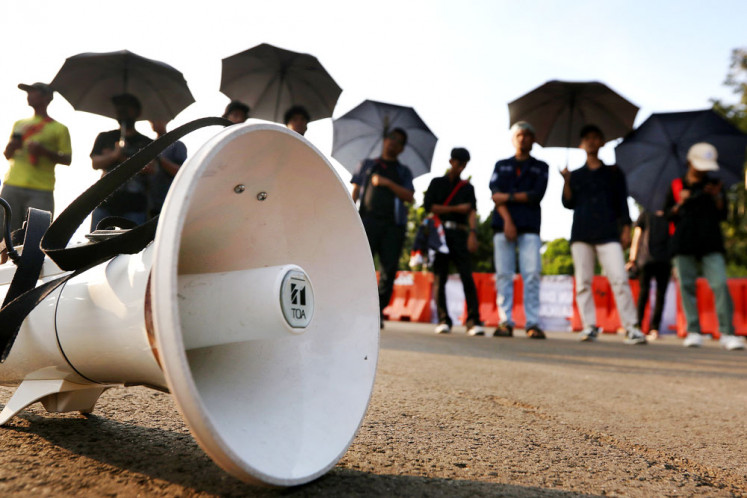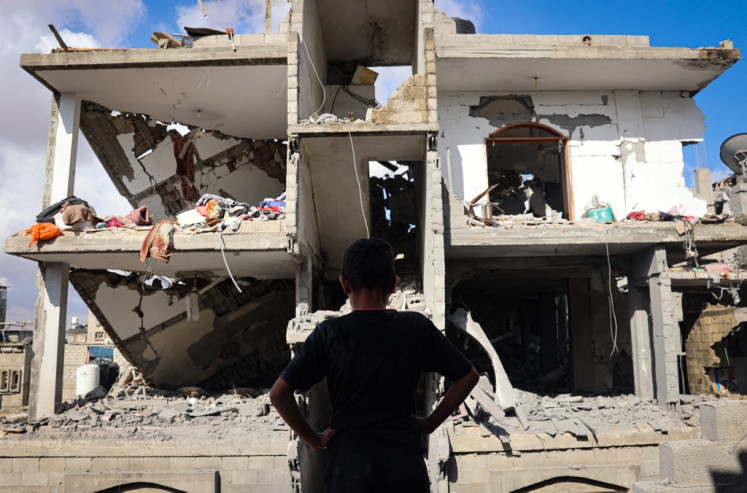BNPB urged to improve disaster-risk master plan
The National Disaster Mitigation Agency (BNPB) has been urged to improve the master plan on tsunami risk reduction because the existing plan was prepared quickly and contains many flaws
Change Size

T
he National Disaster Mitigation Agency (BNPB) has been urged to improve the master plan on tsunami risk reduction because the existing plan was prepared quickly and contains many flaws.
The head of Gadjah Mada University’s Center for Natural Disaster Studies (PSBA), Djati Mardianto, said that the master plan, for example, had not taken into account a range of different tsunami characteristics.
“Like the earthquake that happened in the southern parts of Java Island, people did not feel it, but all of a sudden the tsunami came,” Djati told The Jakarta Post at his office on Friday, adding that it was a slow tsunami.
The master plan, which will be put into place for the 2013–2019 period, was prepared after President Susilo Bambang Yudhoyono instructed the BNPB in April 2012 to prepare a master plan on tsunami risk reduction and to finish it within two months.
The instruction was made following an 8.5-magnitude earthquake that jolted Aceh the same year.
Since the master plan was prepared in a rush, Djati said, it looked more like a compilation of various materials and it lacked a thorough academic foundation. The plan failed to cite the sources of much of its data.
“The BNPB has to improve the master plan because it will serve as a reference for the detailed plan for tsunami risk reduction across Indonesia,” Djati said.
He also suggested that the master plan should be issued as a presidential decree and not as a BNPB regulation in order to embrace all institutions and ministries in its effective implementation.
The head of BNPB’s public relations division, Sutopo Purwo Nugroho, said the master plan was prepared by involving various universities, research institutions and ministries. In terms of basic materials, around 60 percent of the plan came from the Research and Technology Ministry, which conducted a feasibility study on tsunami evacuation buildings.
Sutopo welcomed input on the master plan, which was prepared between May and June 2012.
“If we wait until it is perfect, maybe we will never reach that stage. The President instructed us that the master plan should be implemented in 2013–2014 because he would not know if the next cabinet would pay the same attention to the problem,” he said.
Along with what critics see as a flawed plan, government funding for its implementation has not yet been approved. According to the plan, an initial sum of Rp 1 trillion (US$103 million) will be spent for preparing temporary tsunami evacuation centers in West Sumatra, the Mentawai Islands and along the Java Island’s southern coastal region.
The master plan notes that Indonesia is prone to tsunamis due to its location at the convergence of three of the world’s main tectonic plates — Eurasia, Indo-Australia and the Pacific.
Between 1600 and 2012, there were 172 tsunamis in Indonesia, 90 percent of which were due to tectonic activities.









